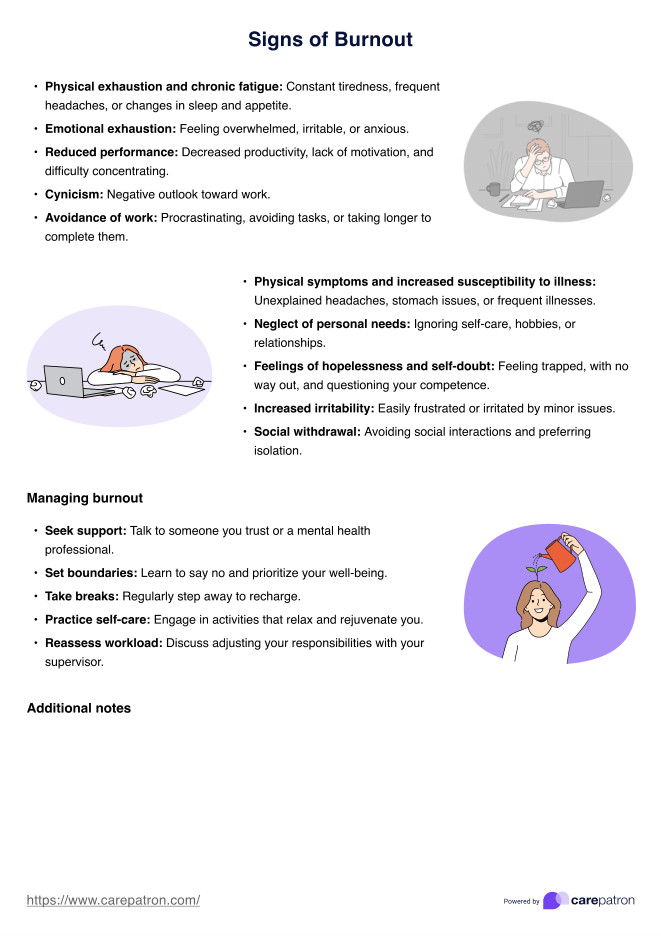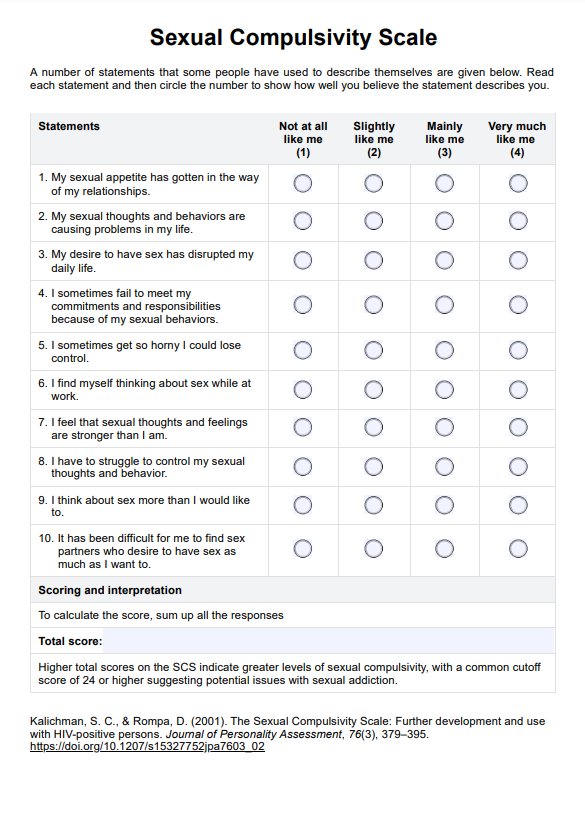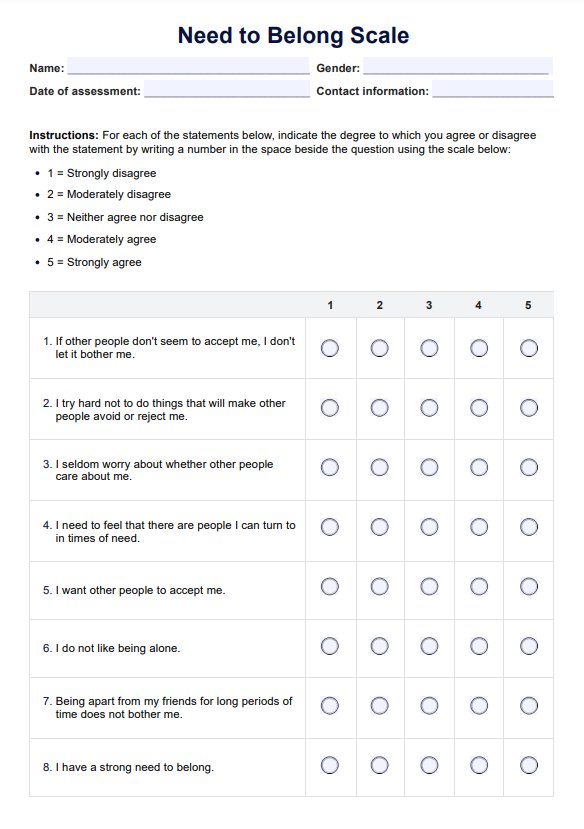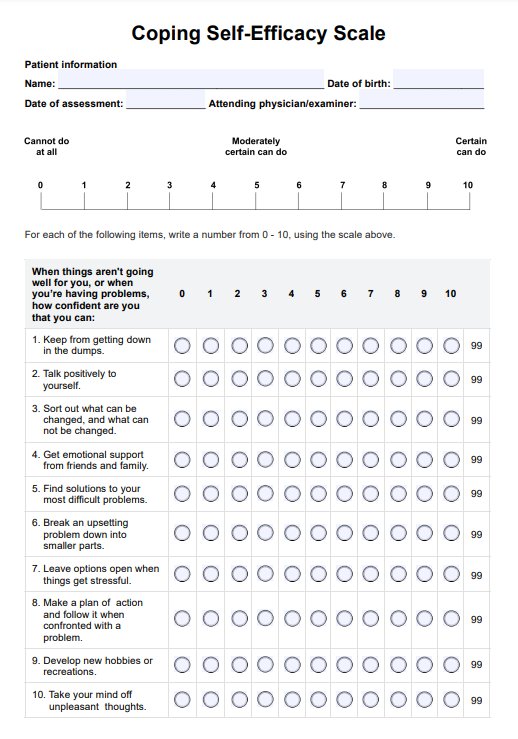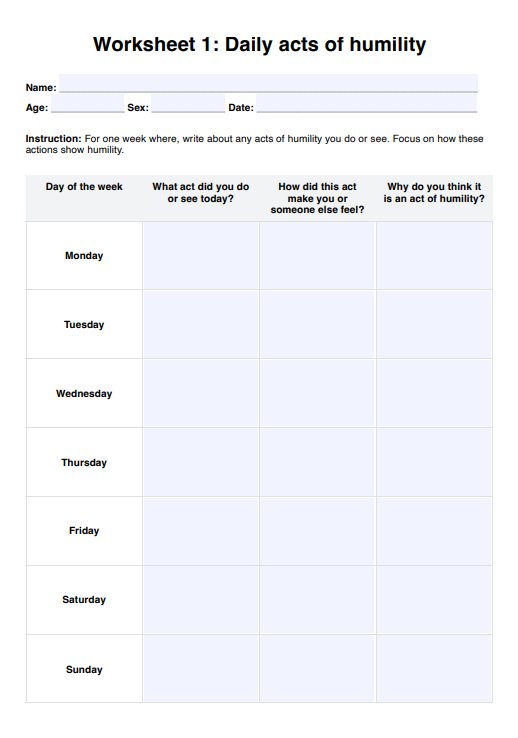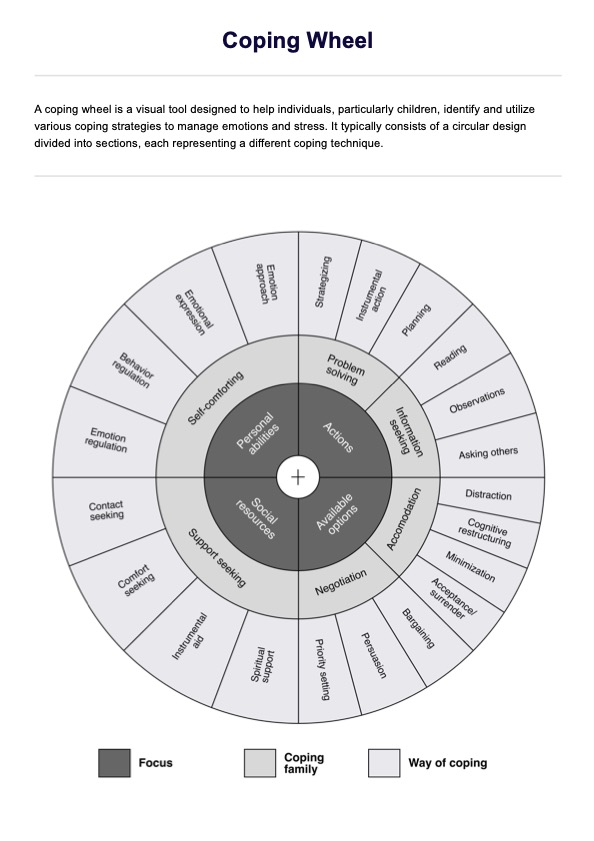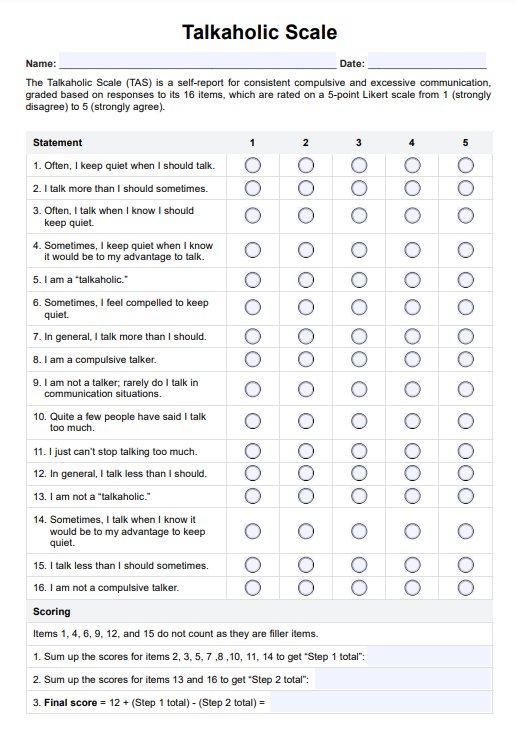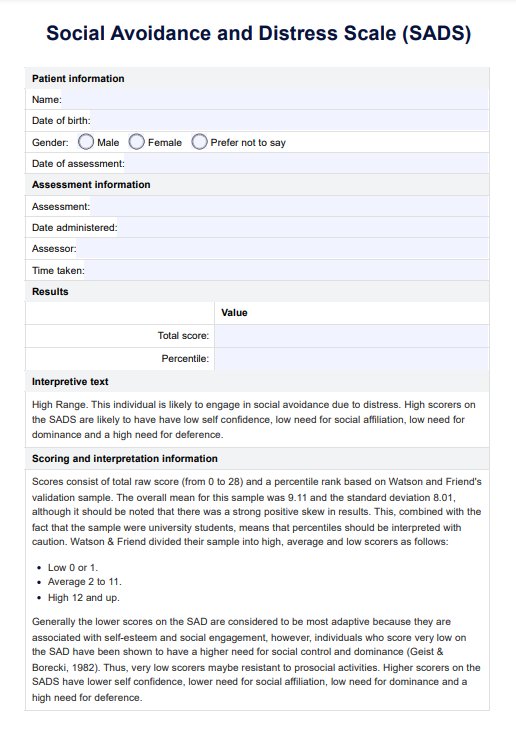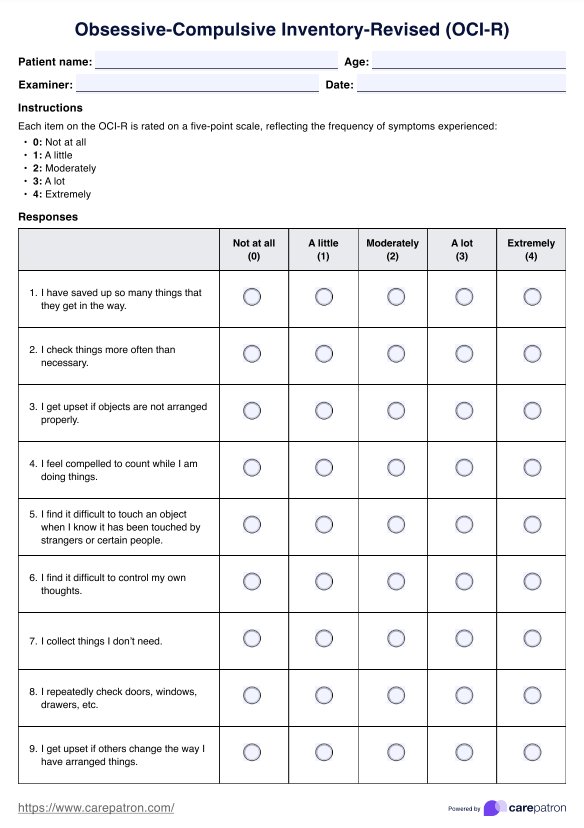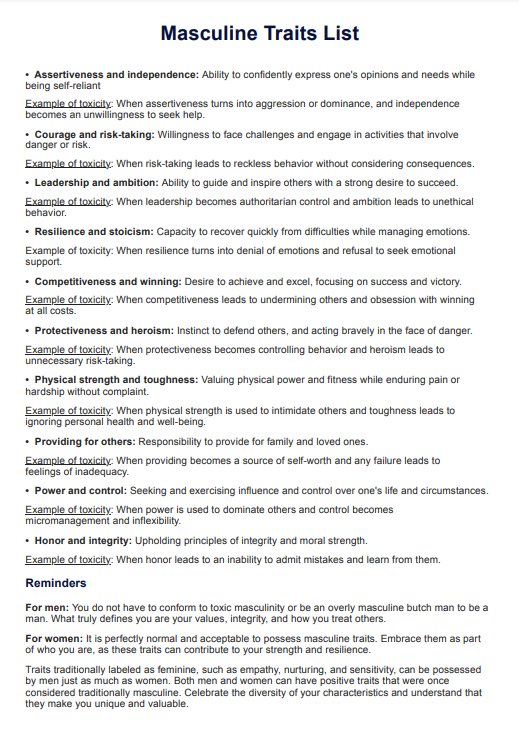BBQ Roll Maneuver
Explore the BBQ Roll Maneuver for treating lateral BPPV with our comprehensive guide. Learn the steps and benefits and download a free PDF example.


What is lateral benign paroxysmal positional vertigo?
Lateral benign paroxysmal positional vertigo (BPPV) is a disorder that causes brief episodes of dizziness and a sensation of spinning when your head is positioned at certain angles. Unlike the more common posterior canal BPPV, lateral BPPV affects the inner ear's horizontal (lateral) semicircular canal. This canal helps regulate the brain's understanding of head movement related to gravity and lateral movements.
Symptoms of lateral canal BPPV
The primary symptom of lateral canal BPPV is horizontal vertigo, which is the sensation that the environment is spinning sideways. This symptom is usually triggered by specific changes in the patient's head and position. Other symptoms may include:
- Nausea
- Balance problems
- A lightheaded feeling
- A brief spinning sensation, which typically lasts less than a minute
- The intensity of symptoms can increase with sudden head movements.
Causes of this type of BPPV
Lateral canal BPPV is generally caused by the displacement of tiny calcium carbonate crystals, called otoconia, from their usual position in the utricle to the lateral semicircular canal. The causes of this displacement may include:
- Head injuries
- Degradation of the inner ear structures with age
- Viral infections of the inner ear
- Prolonged bed rest or periods of inactivity
- When the exact cause remains unknown, this is referred to as an idiopathic lateral canal BPPV
BBQ Roll Maneuver Template
BBQ Roll Maneuver Example
What is the BBQ Roll Maneuver?
The BBQ Roll Maneuver, also known as the Lempert maneuver, is a therapeutic technique healthcare professionals use to treat lateral benign paroxysmal positional vertigo (BPPV), particularly when it affects the right horizontal canal or semicircular canal. This maneuver involves a series of sequential movements that aim to reposition the dislodged calcium carbonate crystals in the inner ear, thereby alleviating the symptoms of vertigo.
How do physical therapists perform this maneuver?
Physical therapists perform the BBQ Roll Maneuver by guiding the patient through a series of rolls:
- The patient starts by sitting on an examination table.
- They lie down on one side with their nose pointed slightly towards the ceiling.
- After waiting a few minutes for any dizziness to subside, the therapist helps the patient roll over onto their back, maintaining the head’s rotation relative to the body.
- The patient continues rolling in the same direction to the opposite side, and finally,
- The patient rolls into a facedown position before sitting back up.
Each position is held for about 30 seconds to a few minutes, depending on the patient’s response and the severity of the vertigo.
How exactly does it help treat lateral BPPV?
The BBQ Roll Maneuver helps treat lateral BPPV by facilitating the movement of the dislodged otoconia out of the horizontal canal back to their original location in the utricle, where they can be reabsorbed or cease to cause disturbance. The sequential rolling motion utilizes gravity to guide the crystals, effectively clearing them from the canal and reducing the triggering of false rotational sensations that lead to vertigo.
Next steps after conducting this maneuver
To maximize the effectiveness of the BBQ Roll Maneuver and ensure the best outcomes, it's important to follow a specific set of steps in the hours and days after the procedure.
Step 1: Maintain an upright position
Immediately following the maneuver, the patient must remain upright for at least 4 to 6 hours. This posture helps ensure that the crystals don’t return to the semicircular canals. Patients are advised to avoid activities that could significantly tilt or bend their neck or head, such as looking down or lying flat.
Step 2: Nighttime precautions
For several nights after the treatment, the patient should sleep with their head elevated at about a 45-degree angle. This can be achieved by using extra pillows or a recliner. They should also avoid sleeping on a pillow on the affected side to prevent the crystals from re-displacing.
Step 3: Follow-up and monitoring
The patient should have a follow-up visit with their healthcare provider to evaluate the maneuver's success. During this visit, the provider will assess symptoms and may perform diagnostic tests to see if the crystals are still causing problems. Continuous monitoring at home is crucial, and the patient should report any recurrence of symptoms to their healthcare provider.
Step 4: Repeat treatment if necessary
If symptoms persist despite the initial maneuver, it may need to be repeated in two patients. Some cases require multiple sessions to resolve the displacement of the otoconia fully. Alternative treatments or referrals to a specialist might also be considered if the patient does not respond to repeated maneuvers.
How to use our BBQ Roll Maneuver template
Follow these guided steps to effectively utilize our BBQ Roll Maneuver template for training or clinical practice. This method is particularly useful for healthcare professionals teaching or administering the maneuver to patients experiencing lateral BPPV.
Step 1: Understand the maneuver
Familiarize yourself with the steps involved in the BBQ Roll Maneuver. Each movement is designed to reposition dislodged crystals in the inner ear to alleviate symptoms of vertigo. Ensure you understand the purpose of each position change to explain it effectively to patients or during training.
Step 2: Prepare the environment
Set up a safe and comfortable environment for performing the maneuver. This includes having a flat surface, adequate room to move, and support materials like cushions or mats if needed.
Step 3: Demonstrate each position
Use the template to demonstrate each position clearly. Start by tilting the head to the left side, then neutral, to the right, onto the stomach with elbows propped and chin tucked, rotated, and finally rolling onto the back with a head tilt. Maintain each position for 30 seconds.
Step 4: Monitor and adjust
As you practice or teach the maneuver, monitor the person's reactions and adjust the technique as necessary. Ensure they are comfortable, and the movements do not induce excessive discomfort or vertigo.
Step 5: Provide comprehensive guidance
When using this template in a clinical setting, provide patients with detailed, written instructions to take home. This ensures they can safely continue the practice if required and understand the importance of each step in the maneuver.
Benefits of conducting this maneuver
Conducting the BBQ Roll Maneuver offers several benefits for individuals experiencing lateral benign paroxysmal positional vertigo (BPPV). Here are the key advantages:
- Quick relief from symptoms: The maneuver can provide immediate relief from the disorienting and uncomfortable symptoms of vertigo, often with just one session. This rapid response can significantly improve the quality of life for sufferers.
- Non-invasive treatment: Unlike some medical interventions that require medication or surgery, the BBQ Roll Maneuver is a physical therapy technique that doesn’t involve invasive procedures or pharmaceuticals. This reduces the risk of side effects and complications associated with more invasive treatments.
- Cost-effective: The maneuver can be performed in a clinical setting without needing specialized equipment or prolonged hospital stays, making it a cost-effective treatment option for vertigo.
- High success rate: The BBQ Roll Maneuver has a high success rate in resolving symptoms of lateral canal BPPV, especially when performed correctly by a trained healthcare professional.
- Empowerment through self-care: Once patients learn the maneuver from a healthcare provider, they may be able to perform it at home if their symptoms recur, empowering them to manage their condition actively.
- Prevents recurrence: By effectively relocating the dislodged crystals to their correct position in the ear, the maneuver decreases the likelihood of recurrent episodes of vertigo, assuming that the particles remain in their correct place or dissolve.
Commonly asked questions
To treat lateral BPPV, maneuvers such as the BBQ Roll Maneuver or Lempert Roll are typically used to reposition the dislodged crystals in the inner ear, effectively alleviating symptoms.
During BPPV, it's important to avoid sudden head movements, bending over, sitting position or lying down quickly, as these actions can trigger or worsen vertigo episodes.
To determine the affected right side of BPPV, doctors perform diagnostic maneuvers like the Dix-Hallpike test or the supine head roll test, observing the direction of horizontal nystagmus (abnormal eye movements) triggered by these positions.


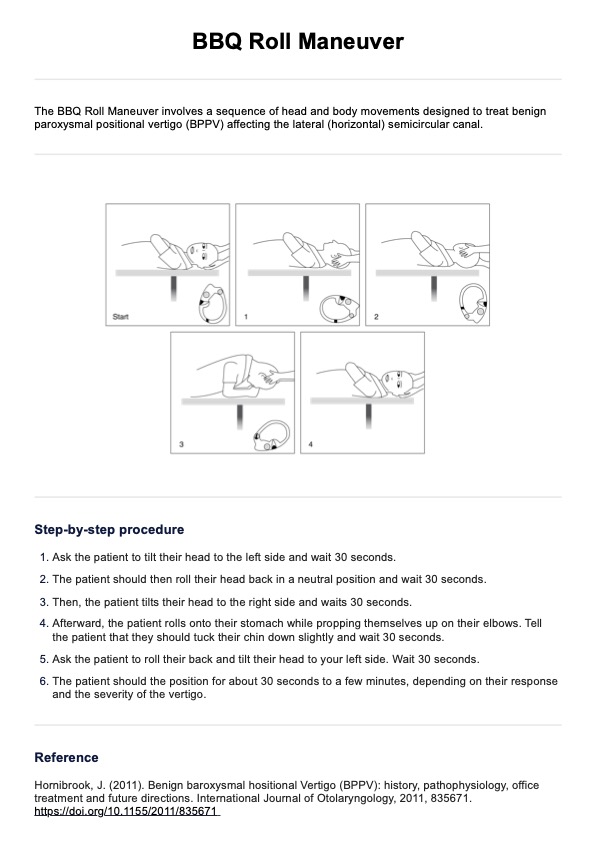
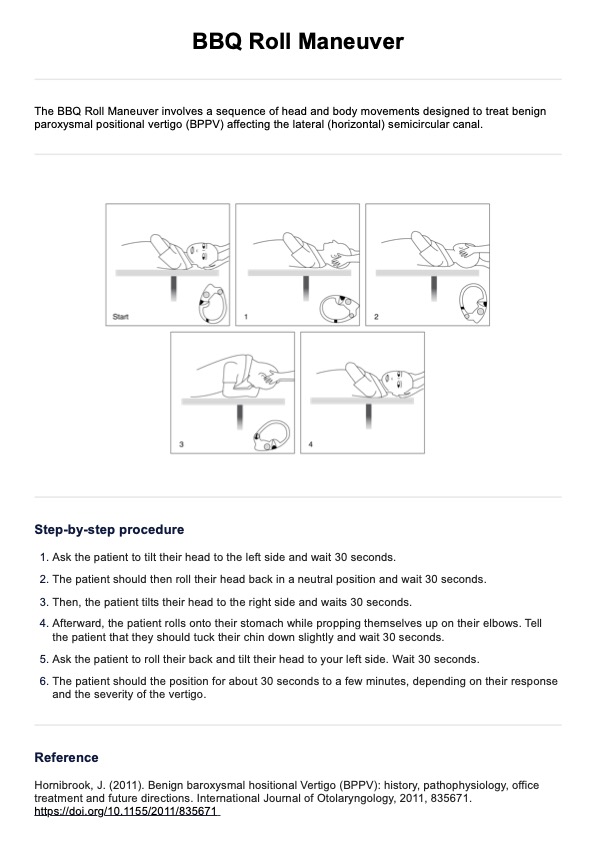














-template.jpg)
























































